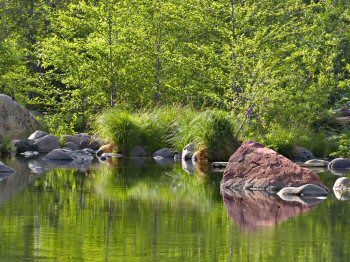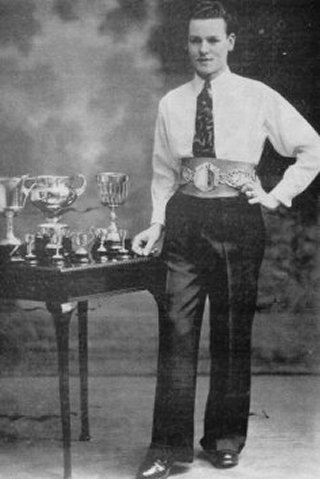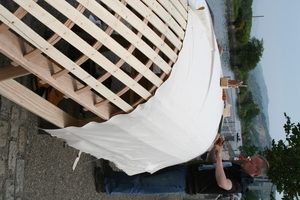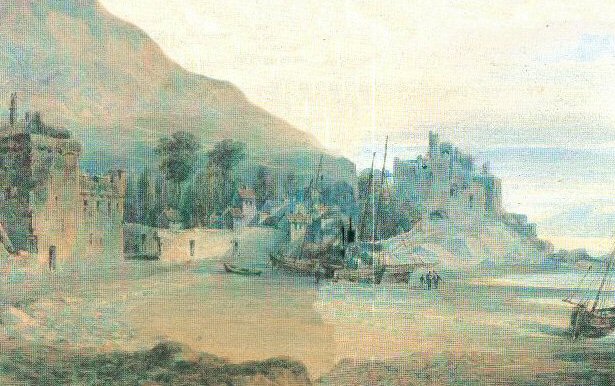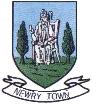I was sorting out books in the attic, to donate to Cancer Research Shop when I came across Mark Twain’s two classics, Huck Finn and Tom Sawyer. I saved those for the grandchildren.
Recreation
Reversal – M Connolly
You can tell a lot about a person by quickly scanning their bookshelves, almost as much as you can by listing their friends, their musical or artistic tastes or their leisure pursuits.
Barn Dances
Rosaleen Beattie shared her memories of rural life in South Armagh over six decades.
‘Most farmhouses were self-sufficient in past days, with milk cows, stores, calves, horses, pigs, a few sheep, goats, turkeys, geese, ducks, hens as well as a wide variety of crops. In summer the sound of mowing machines filled the air. The seed hay and corn harvest was tied in sheaves by the farmer, his family being helped out by willing neighbours.
The sheaves were stoked, the loose hay shaken out, turned until dry and built into ‘cocks’, all this done with pitchforks. Cocks of hay were moved using a ‘needle’, a long iron bar which was pushed through the bottom of the cock of hay with a rope over the top, allowing it to be pulled by a horse. Then the countryside had an aroma of new-mown hay, roses and honeysuckle.
People had pet names for their livestock, like Bob or Sampson for a horse, or Daisy or Betty for a cow. When an animal had to be sold there were mixed feelings; it was like parting from an old friend.
Most homes produced their own food, like butter, milk, potatoes, eggs, vegetables – and baked their own bread. There was always a large bag of flour in the kitchen. Churning was a weekly chore for the housewife. Many farmers also kept pigs for bacon and ham. Some groceries, like sugar, tea and paraffin oil were purchased at the local shop, with of course Sunlight soap for washing clothes and carbolic for washing oneself. Just mentioning it brings back its smell!
Homes were lit with candles and oil-lamps for there was no rural electricity until well into the middle of the twentieth century. Our big leap forward came with the ‘Alladin’ and ‘Tilly’ lamps in the 1930s. Later we had gas lights – with mantles – before we finally got electricity in the early 1960s. Houses and gate pillars were whitewashed every spring and the tops of the pillars were tarred, in the interests of hygiene. Most doors and half-doors were painted ‘Spanish Brown’ – a favourite colour of the day.
Barn dances were the thing, with the music of Bing Crosby, Harry Lauder – a popular music hall entertainer – Arthur Tracey, George Formby and John McCormack. Jimmy O’Dea the comedian was becoming very popular. Popular songs of my time included ‘Cod Liver Oil’, ‘Sweet Kitty Wells’, ‘Flower of Sweet Strabane’ and ‘Mountain Dew’. Our favourite pastimes included handball, skittles, bullets and marbles.
Tain Festival, Dundalk
The T
On Friday night at 7.30 (
Currach Championship Newry
The Irish International Currach Association are holding their championship in Newry from 9-11th June. Friday was based at Camlough Lake with Saturday and Sundays events at the Albert Basin, in front of the Quays Shopping Centre.
If you get a chance you should pop down on Sunday afternoon.
Here are a few photos from Saturday at the Albert Basin.
Lughnasa: Newpoint, tonight
Tonight is the big one, the performance we have all been waiting for, the appearance of the home side Newpoint, presenting Friel’s Dancing at Lughnasa. It is the welcome return as director of Sean Treanor and as actors of the fabulous team of Patricia McCoy, Pauline Lynch, Denise Taylor, Paul McParland, Pat Mooney and Laurie Hodgett and the debut of Corrina Cunningham and Molly Finn.
Carlingford of mid-18th century
When they thought it safe to journey through Ireland (i.e. when the ‘natives’ were sufficiently subjugated) various English gentlemen-of-leisure ventured to the smaller island, to give account, in books, diaries and journals, of the new countryside they had explored and the valiant efforts of their fellow-countrymen to bring civilisation to the savages.
2007 Drama Festival begins
Newry Drama Festival is now well under way and it’s time I brought you up to date.
November reviewed
I haven’t laughed as much in ages! Indeed, owning a hearty guffaw, I could be heard all over the auditorium, to the consternation of my dear wife and companion. But ‘November’ was absolutely hilarious!
